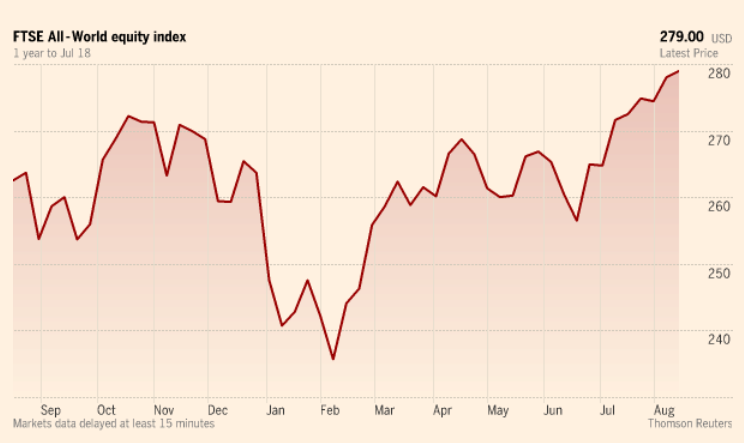Dividend income is secure income while investors with comparatively low risk appetite prefer dividend stocks in their portfolio. It is also a good investment from those who don’t want to watch the market every day and still want to secure their investments and make money. If anybody needs to park money for higher regular return, they can park their money into high dividend stocks. The key things that dividend investors can pay heed to –
Quality of business: Investment in high quality businesses gives comfort in terms of stability, growth and profitability. Investment into business that has strong history of solid growth enables companies to distribute profits by giving dividends. One should consider the dividend stocks by long-term earnings-per share growth or dividend growth. The constant dividend also typically indicates for quality of business growth.
Dividend consistency: Investors prefer companies with long dividend history in the rising trend. Invest in businesses that have higher income that help to ensure that dividends won’t be cut during business downturn. This can be easily analyzed by dividend payout ratios. The rise in dividend in a continuous manner is also a good indicator that company is growing and giving sustainable returns to the investors. One should look for such companies with strong fundamentals and growth records.
Frequency of paying dividend: If the stock reduces its dividend, it indicates that the business has lost its competitive advantage and reinvested the proceeds of the sale into more stable business. Additionally, if the frequency of dividend payout is not consistent, it may mean that the business is not stable. In good time the company is paying while in bad times it is unable to bring growth to distribute profit. Thus, the consistency in general is indicative of the stock being on growth radar.
Reinvestment of dividend: Investors can use reinvestment programs, which would allow them to reinvest dividends automatically without paying commission. With the passage of time, more capital is allocated to the business and dividend payout can continue to increase with growing business. The compounding makes big difference to your portfolio as we can see from following chart.
Region-wise Returns from Dividend Yields (Source: Financial Times and Société Générale)
Dividend payout ratio: Dividend payout ratio is also one of the important criteria, as higher the ratio means that the company is keeping minimum profits for reinvestment in the business for future growth. More than 100% indicate a concern as company is paying out of its current reserves.
Stability and cash flow: Some entities tend to generate high levels of cash like bank, consumer staple, utility and insurers. Such entities with volume sales tend to have a reputation for generating positive cash flows as compared with companies with small product portfolio. Further, the companies generating strong operating cash flow tend to distribute better dividends to investors as well as indicate a healthy picture from future growth perspective. Such companies are good investment bet from dividend perspective. Companies with decent portfolio of products and poor sales might not be able to generate cash flow as poor performance may be eating away cash flow of good product sales.
Identifying value: Identifying the value is very important. One can make greater return if one can invest for a longer period of time in stable companies that pay consistent dividends and raise those dividends on steady basis. This approach can yield greater return but identifying value is important.
Performance in recession: The performance of the company in the recession should also be considered. The real world data can help an investor find companies who are much less cyclical than others. Investors need to find such companies which are not much affected by recession and manage to reward investors by paying dividends.
Disclaimer
The advice given by Kalkine Pty Ltd and provided on this website is general information only and it does not take into account your investment objectives, financial situation or needs. You should therefore consider whether the advice is appropriate to your investment objectives, financial situation and needs before acting upon it. You should seek advice from a financial adviser, stockbroker or other professional (including taxation and legal advice) as necessary before acting on any advice. Not all investments are appropriate for all people. Kalkine.com.au and associated websites are published by Kalkine Pty Ltd ABN 34 154 808 312 (Australian Financial Services License Number 425376).The information on this website has been prepared from a wide variety of sources, which Kalkine Pty Ltd, to the best of its knowledge and belief, considers accurate. You should make your own enquiries about any investments and we strongly suggest you seek advice before acting upon any recommendation. Kalkine Pty Ltd has made every effort to ensure the reliability of information contained in its newsletters and websites. All information represents our views at the date of publication and may change without notice. To the extent permitted by law, Kalkine Pty Ltd excludes all liability for any loss or damage arising from the use of this website and any information published (including any indirect or consequential loss, any data loss or data corruption). If the law prohibits this exclusion, Kalkine Pty Ltd hereby limits its liability, to the extent permitted by law to the resupply of services. There may be a product disclosure statement or other offer document for the securities and financial products we write about in Kalkine Reports. You should obtain a copy of the product disclosure statement or offer document before making any decision about whether to acquire the security or product. The link to our Terms & Conditions has been provided please go through them and also have a read of the Financial Services Guide. On the date of publishing this report (mentioned on the website), employees and/or associates of Kalkine Pty Ltd currently hold positions in: BHP, BKY, KCN, PDN, and RIO. These stocks can change any time and readers of the reports should not consider these stocks as advice or recommendations.








